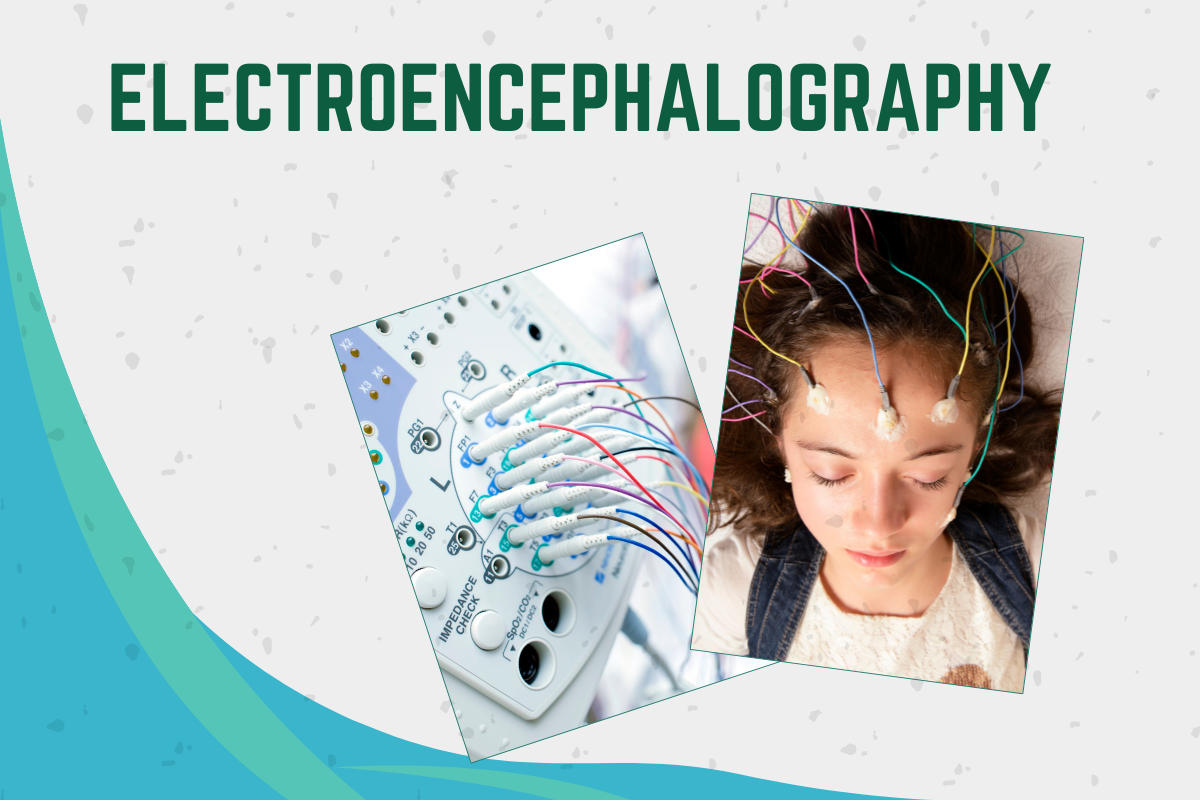ELECTROENCEPHALOGRAPHY
Electroencephalography is the neurophysiologic measurement of the electrical activity of the brain OBTAINED by recording from electrodes placed on the scalp or, in special cases, subdurally or in the cerebral cortex. The resulting traces are known as an electroencephalogram (EEG) and represent an electrical signal (postsynaptic potentials) from a large number of neurons.
CLINICAL USE
EEG in various forms is most useful as a tool for monitoring and diagnosis in certain clinical situations:
- Seizure and epilepsy: to detect seizure focus and monitor the effects of treatment
- Disorders with coexisting seizures: in cases of autism, cp, etc, where the patient may not have experienced a seizure attack or shown symptoms, EEG can efficiently detect a possible underlying epileptic focus
- Sleep disorders
- Eating disorders
- Coma and brain death
- Dementia
PROCEDURE
- In conventional scalp EEG, the recording is obtained by placing electrodes on the scalp, after preparing the scalp area BY applying a conductive gel to reduce impedance. Modern EEG systems have the subject wear a plastic cap where the electrodes are inserted in small holes.
- Electrode placement is determined by measuring and marking the scalp using a system called the 10-20 system. During a standard EEG, the patient is asked to breathe deeply for some minutes, look at a flashing light, etc. These activities change the electrical activity in the brain which shows on the computer. The patient is asked to keep as still as possible during the test. Any movement can change the electrical activity in the brain, which can affect the results.



